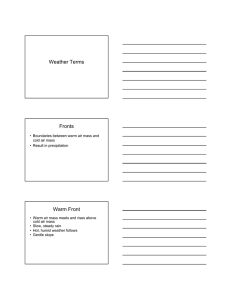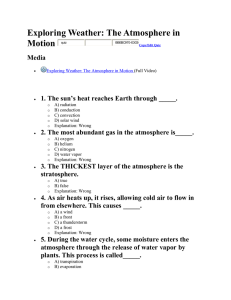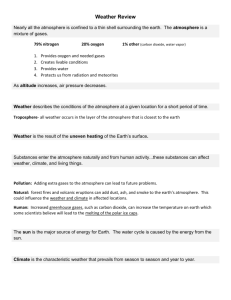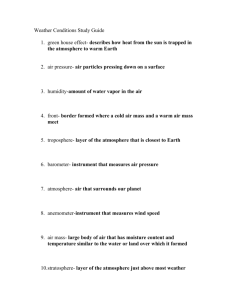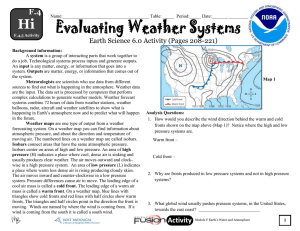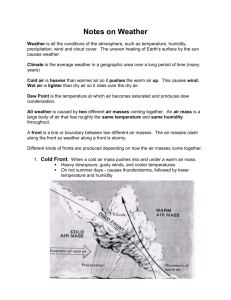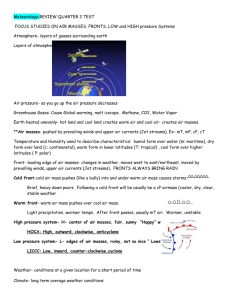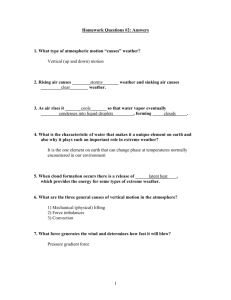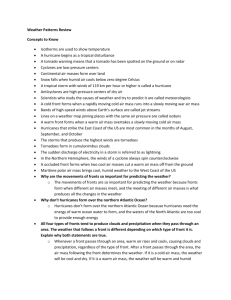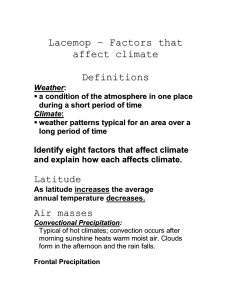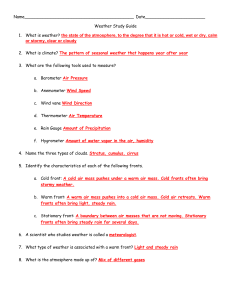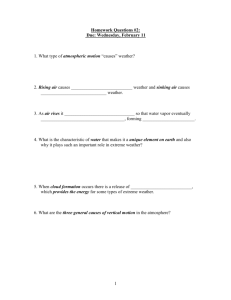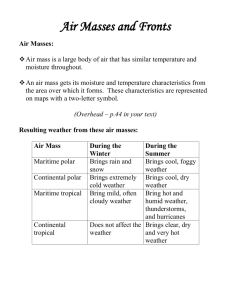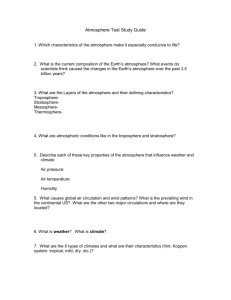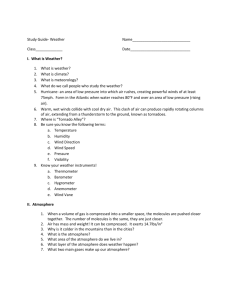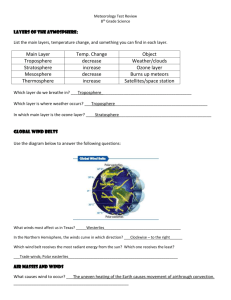Study Guide
advertisement
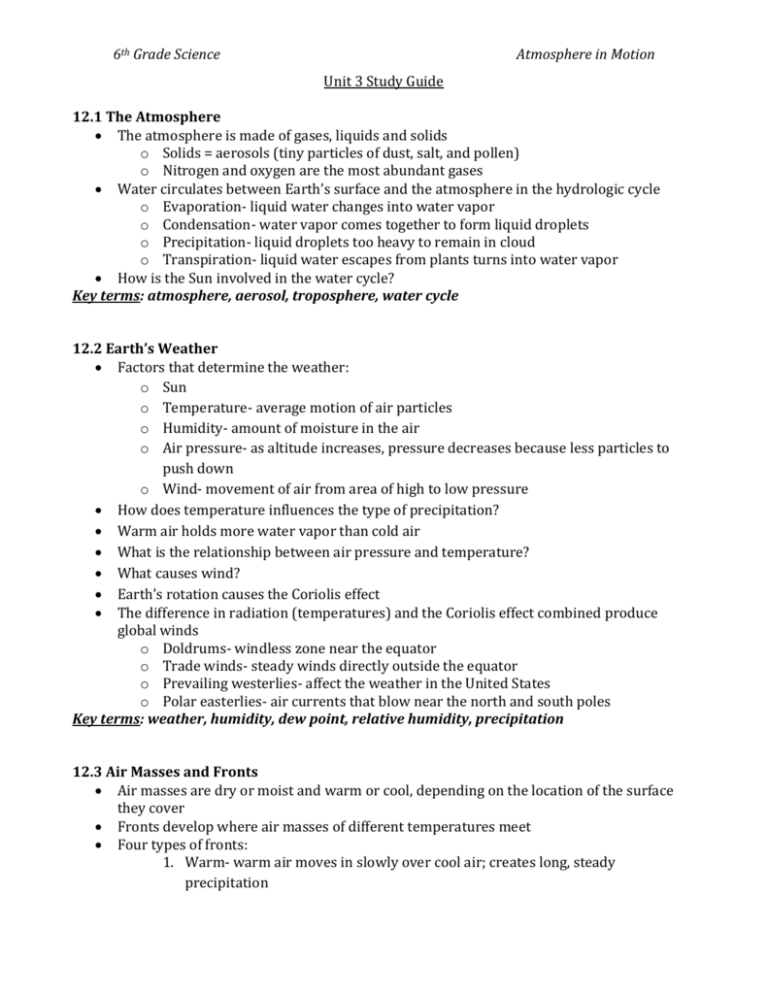
6th Grade Science Atmosphere in Motion Unit 3 Study Guide 12.1 The Atmosphere The atmosphere is made of gases, liquids and solids o Solids = aerosols (tiny particles of dust, salt, and pollen) o Nitrogen and oxygen are the most abundant gases Water circulates between Earth’s surface and the atmosphere in the hydrologic cycle o Evaporation- liquid water changes into water vapor o Condensation- water vapor comes together to form liquid droplets o Precipitation- liquid droplets too heavy to remain in cloud o Transpiration- liquid water escapes from plants turns into water vapor How is the Sun involved in the water cycle? Key terms: atmosphere, aerosol, troposphere, water cycle 12.2 Earth’s Weather Factors that determine the weather: o Sun o Temperature- average motion of air particles o Humidity- amount of moisture in the air o Air pressure- as altitude increases, pressure decreases because less particles to push down o Wind- movement of air from area of high to low pressure How does temperature influences the type of precipitation? Warm air holds more water vapor than cold air What is the relationship between air pressure and temperature? What causes wind? Earth’s rotation causes the Coriolis effect The difference in radiation (temperatures) and the Coriolis effect combined produce global winds o Doldrums- windless zone near the equator o Trade winds- steady winds directly outside the equator o Prevailing westerlies- affect the weather in the United States o Polar easterlies- air currents that blow near the north and south poles Key terms: weather, humidity, dew point, relative humidity, precipitation 12.3 Air Masses and Fronts Air masses are dry or moist and warm or cool, depending on the location of the surface they cover Fronts develop where air masses of different temperatures meet Four types of fronts: 1. Warm- warm air moves in slowly over cool air; creates long, steady precipitation 2. Cold- cool air moves in quickly and forces warm air up; creates heavy rain and violent storms 3. Occluded- warm air is cut off by cool and cold air and forced up 4. Stationary- warm and cool air at standstill What do all four types of fronts have in common? Blizzards form during freezing temperatures when snow falls to the ground at fast speeds o Dangerous because decreases visibility Both thunderstorms and tornadoes form from a cold front (cumulonimbus clouds) Hurricanes form from swirling winds over tropical oceans (warm, moist air) Key terms: air mass, front, tornado, hurricane Short answer questions: 1. Weather factors 2. Fronts

